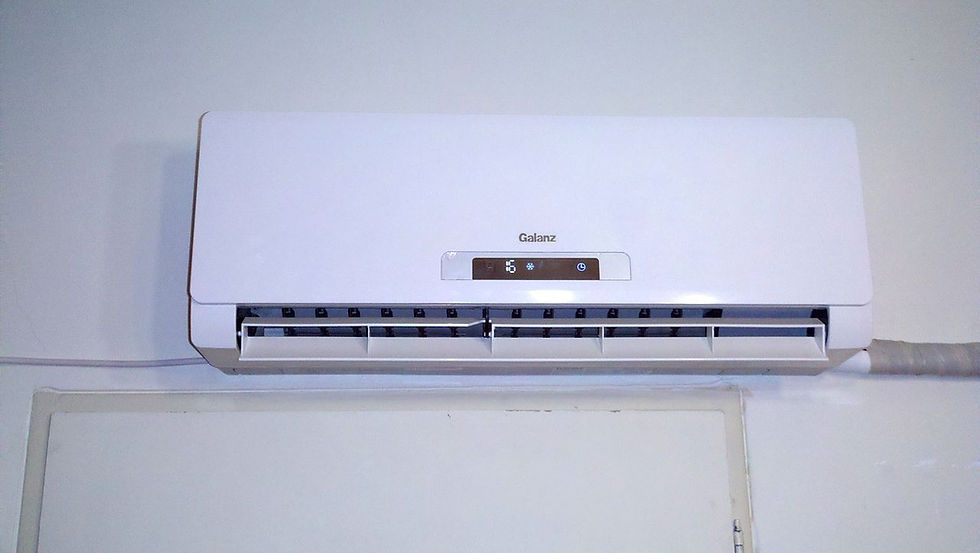CENTRAL (DUCTED) AIR CONDITIONING VS MINI-SPLIT (DUCTLESS) SYSTEM
- American HVACR , LLC

- Dec 27, 2017
- 2 min read
CENTRAL (DUCTED) AIR CONDITIONING
Central (ducted) air conditioning offers whole-house or large-commercial-space cooling,

and often offers moderate multi-zone temperature control capability by the addition of air-louver-control boxes.
In central air conditioning, the inside heat-exchanger is typically placed inside the central furnace/AC unit of the forced air heating system which is then used in the summer to distribute chilled air throughout a residence or commercial building. Central air-conditioning systems use ducts to distribute cooled air throughout the house. The refrigerant cools the air, dehumidifying it in the process; a blower circulates air through ducts throughout the house. A variation is the "heat pump," a type of system that functions as heater and cooler.
Features to look for when buying an central air conditioner :
An automatic-delay fan switch to turn off the fan a few minutes after the compressor turns off
A thermal expansion valve and a high-temperature rating (EER) greater than 11.6, for high-efficiency operation when the weather is at its hottest
A filter check light to remind you to check the filter after a predetermined number of operating hours.
A variable speed air handler for new ventilation systems
A unit that operates quietly
A fan-only switch, so you can use the unit for nighttime ventilation to substantially reduce air-conditioning costs
MINI-SPLIT (DUCTLESS) SYSTEM
A mini-split system typically supplies air conditioned and heated air to a single or a few

rooms of a building.Multi-zone systems are a common application of ductless systems and allow up to 8 rooms (zones) to be conditioned from a single outdoor unit. Multi-zone systems typically offer a variety of indoor unit styles including wall-mounted, ceiling-mounted, ceiling recessed, and horizontal ducted. Mini-split systems typically produce 9,000 to 36,000 Btu (9,500–38,000 kJ) per hour of cooling. Multi-zone systems provide extended cooling and heating capacity up to 60,000 Btu's.
Advantages of the ductless system include smaller size and flexibility for zoning or heating and cooling individual rooms. The inside wall space required is significantly reduced. Also, the compressor and heat exchanger can be located farther away from the inside space, rather than merely on the other side of the same unit as in a PTAC or window air conditioner. Flexible exterior hoses lead from the outside unit to the interior one(s); these are often enclosed with metal to look like common drainpipes from the roof. In addition, ductless systems offer higher efficiency, reaching above 30 SEER.

The primary disadvantage of ductless air conditioners is their cost. Such systems cost about US$1,500 to US$2,000 per ton (12,000 BTU per hour) of cooling capacity. This is about 30% more than central systems (not including ductwork) and may cost more than twice as much as window units of similar capacity.
An additional possible disadvantage that the cost of installing mini splits can be higher than some systems, although lower operating costs and rebates or other financial incentives—offered in some areas—can help offset the initial expense.
We Sale,Repair,Service,Maintenance and Installation on all types of Central (Ducted) Air conditioner and Mini-Split (Ductless ) Air conditioner.
For More Service Information.Contact Us Today !
Content Source from Wikipedia



























Comments